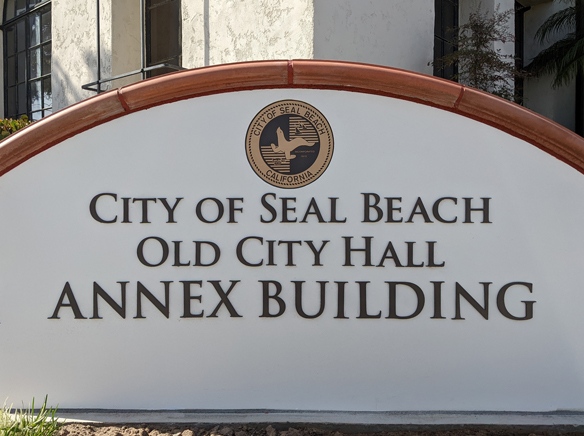The council on Monday, July 22, voted unanimously to put a half-cent sales tax on the November ballot.
Technically, the tax is called a “transaction and use tax.”
The TUT tax is now 1%. Staff proposed increasing the tax to 1.5%.
Due to time and space limits, details of the discussion will be covered next week.
In related news, the council amended an existing contract with Lew Edwards Group for consulting services related to putting the tax measure on the ballot. (See related story, page 3.)
Discussion
City Manager Jill Ingram said the proposal they were looking at was a culmination spanning months of community engagement. Ingram said there was a clearly demonstrated interest in additional funds so the city can continue to provide the high quality services residents expect.
Ingram said a community survey taken in the spring found participants favored budget priorities such as maintaining 9-1-1, police, fire, emergency medical response and paramedic services, protecting drinking water, preventing property crimes and retail theft, and keeping public areas and beaches safe and clean.
Ingram said state law requires the money raised by the proposed tax to be spent in Seal Beach for local services.
She said the measure includes public disclosure of all spending and an annual independent audit.
Following the staff presentation by Finance Director/Treasurer Barbara Arenado, council members discussed the proposal.
Arenado told the council that groceries and prescription medicine were exempt from the proposed sales tax.
District Three Councilwoman/Mayor Pro Tem Lisa Landau said she knew this was challenging because Seal Beach was surrounded by cities that Costcos and Home Depots and multitudes of hotels and convention centers. Seal Beach has a river on one side and the Naval Weapons Station on the other. “Our growth for revenue is very challenging,” Landau said.
“It’s almost like a double-edged sword, because we have to balance our local businesses and how all of this impacts them, versus maintaining services for our residents,” Landau said.
“With the tax increase, it’s shared between visitors and residents,” Landau said.
“I want to give it to the voters to decide if they want this tax increase,” Landau said.
District Two Council Member Tom Moore said he understood this was a difficult decision, especially considering the financial management challenges the city has faced. “Although I’m inclined to oppose this measure, I would consider supporting it under certain conditions,” Moore said. One: He wanted the city manager and staff to commit to implementing a comprehensive pension pay-down plan. Two: He wanted the three- to five-year financial plan to include a plan to reduce negative balances. He called for the plan to include freezing positions and controlling expenses as necessary. Three: He wanted to dedicate funds to meet infrastructure needs. Moore called for future councils to direct a portion of the funds from the tax to critical infrastructure projects.
Moore also suggested that the council commit to meeting next year to discuss using the funds for infrastructure.
Moore said his support was contingent on those three conditions.
District Four Council Member/Mayor Schelly Sustarsic said she supported putting the measure on the ballot and letting the voters decide.
District Five Councilman Nathan Steele also supported putting the measure on the ballot.
“The conservative in me is anti-tax, small government, and that sort of thing,” Steele said.
According to Steele, neighboring cities have different revenue profiles than Seal Beach. “We’re built out at 97%, we don’t have a lot of hotels and I don’t see any hotels on the horizon,” Steele said.
“We don’t have the ability for new development,” Steele said.
“We saw a lot of companies survive Covid,” Steele said.
“Suddenly, they’re going out of business,” Steele said.
He said he attended a financial seminar last year about the financial health of small towns like Seal Beach.
“The prognosis is not good,” Steele said.
“Costs are going up faster than our revenue,” Steele said.
He said they were talking about 50 cents on $100. “I don’t think anybody is going to avoid Seal Beach’s stores for 50 cents on $100. Nobody will notice,” Steele said.
Sustarsic said Los Alamitos had a higher sales tax than Seal Beach; Westminster she wasn’t sure about and Long Beach was “way higher.”
“We wouldn’t be way up there,” Sustarsic said.
Steele said he recently bought a car. He said part of the sales tax for the car he bought in Tustin went to Seal Beach. Moore asked about including his three conditions. “Is that something the city can accomplish?” Moore asked.
Ingram said she’d already taken them down and was happy to accept them as the consensus of council and move forward on implementing those conditions.
City Attorney Nick Ghirelli said to this was a general sales tax. He said the revenue can be used for any city service, including what the council directs as part of the budget process.
Arenado said if passed, the tax would take effect April 1, 2025.
District One Council Member Joe Kalmick said he supported the measure. “We have to be realistic about the inexorable fact that expenses are going up faster than revenue,” Kalmick said.
“When we passed Measure BB, there were cries of ‘We’re all gonna die.’ That didn’t happen, fortunately. It did buy us another five years. I think this is something that we really have to do,” Kalmick said.
Background
According to the staff report by Finance Director/Treasurer Arenado, the city’s operating costs are rising faster than revenues. “Based on current projections, unless a new revenue source is identified, the City faces substantial budget deficits and service reductions, jeopardizing the City’s essential services to the community,” Arenado wrote.
“In recent years, the City has made several service and operations reductions to remedy shortfalls and has been diligent about financial planning to ensure sustainability and continuity in service to the community,” Arenado wrote. (See “Council looking at budget cuts,” at sunnews.org.)
“However, the City is grappling with an ongoing structural deficit, necessitating reductions in certain service levels to mitigate the widening gap between expenses and revenue,” Arenado wrote,” Arenado wrote.
“Additionally, the City is contending with the ongoing challenges posed by shifts in statewide legislation and regulations. The State imposes expensive regulations and bureaucracy which takes away funding and local tax revenue from our City,” Arenado wrote.
“The initial budget proposal for FY 2024-25 projected a $6 million deficit. The growth in the deficit was driven primarily by baseline adjustments responding to historically high inflation rates,” Arenado wrote.
“Salary and benefit costs were reduced by $1 million through identified savings such as position reductions, deferrals, hiring at a reduced step, reducing overtime, and utilizing CalPERS PEPRA savings,” Arenado wrote.
“Given the myriads of assumptions within the analysis, the baseline outlook projects shortfalls beginning at $1.5 million in FY 2025-26 and increasing to $2.8 million,” Arenado wrote.
A table on page 3 of the staff report showing the five-year forecast projects a surplus of $33,833 at the end of the 2024-25 fiscal year. (For more on the five-year forecast, see “City Council discusses 2024-25 budget,” at sunnews.org.)
“Staff is recommending placing a one-half-cent transactions and use tax (“sales tax”) on the November 2024 ballot to ensure voters have a voice in determining the level of service they want for their community.
“The financial forecast including a one-half-cent sales tax shows the City can stabilize and maintain the current service levels and continue to meet its reserve requirement throughout the five-year forecast,” Arenado wrote.
Tax cap
“State law imposes a ‘cap’ on the amount of sales tax the County and a city within that county may levy together. California Revenue and Taxation Code § 7251.1 states that ‘the combined rate of all taxes imposed in accordance with this part in any county may not exceed 2 percent,’” Arenado wrote.
“The Orange County Transportation Authority has already used 0.50% of the ‘cap’ and could propose its own additional sales tax measures in a future election, further reducing the amount available specifically to the City,” Arenado wrote.
“If the County or other local districts or agencies pass local sales tax measures and meet the cap, it would leave Seal Beach voters no opportunity to implement a local sales tax measure to support local City services,” Arenado wrote.
Her report went on to argue that visitors would share the costs of maintaining city services. “The City Council does not have the authority to establish or raise taxes, only to put a measure on the ballot for voter consideration. To place this type of local funding measure on the November 5, 2024, ballot, the City Council must approve the submission of the measure to the voters,” Arenado wrote.
Cost
“Total election costs for the ballot measure are currently estimated at approximately $60,000, which is included in the Revitalization set aside in the FY 2024-25 Budget,” she wrote.
“Under the Revenue and Taxation Code section 7272, the California Department of Tax and Fee Administration (CDTFA) will assess the City for preparatory charges to administer the new local sales tax based on actual costs. The CDTFA has a statutory maximum charge for preparatory costs to administer a new local tax of $175,000,” she wrote.
“These costs can vary depending on the complexity and requirements of the new tax program and upon voter approval these costs, when determined, will be funded through fund balance at that time,” Arenado wrote.




